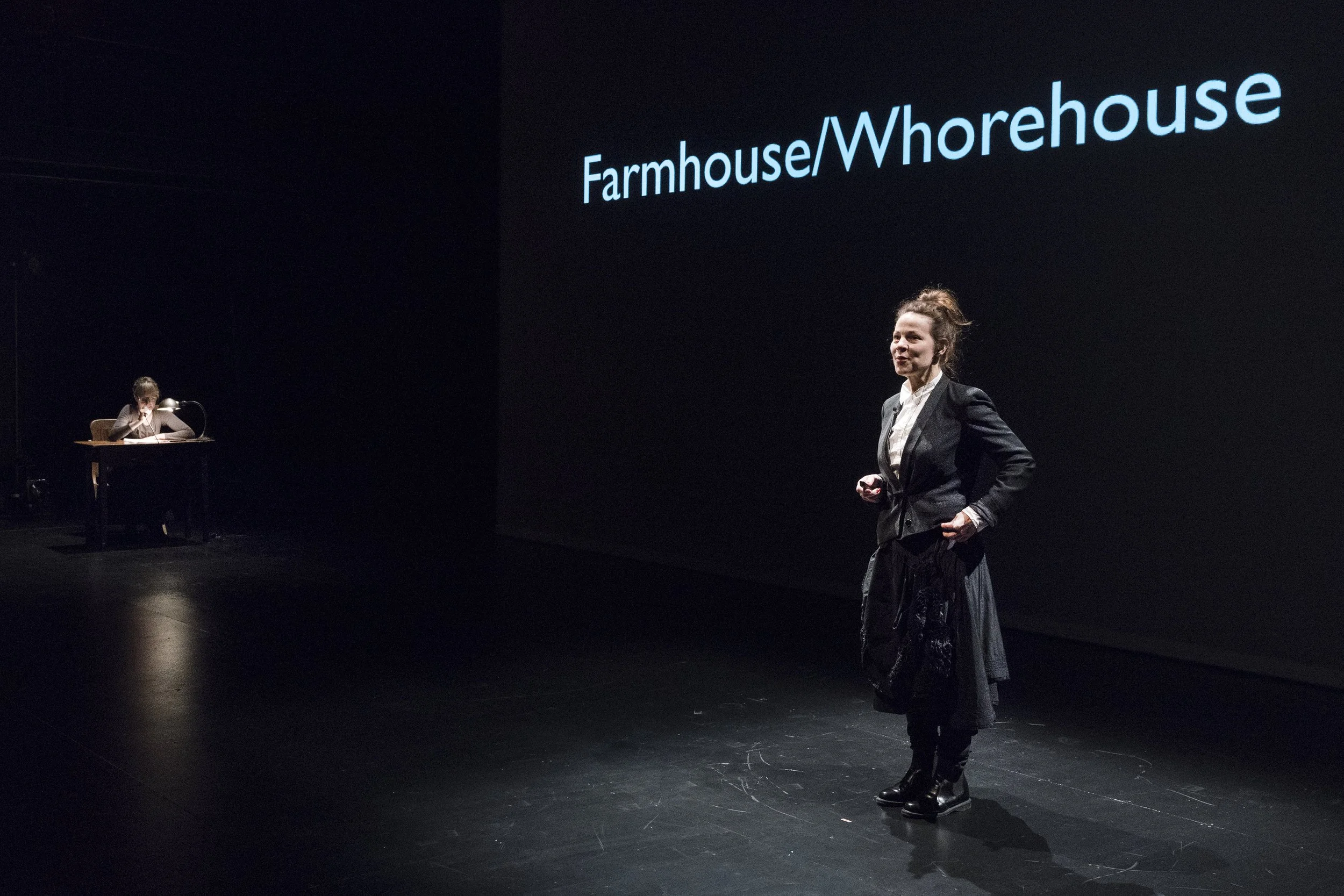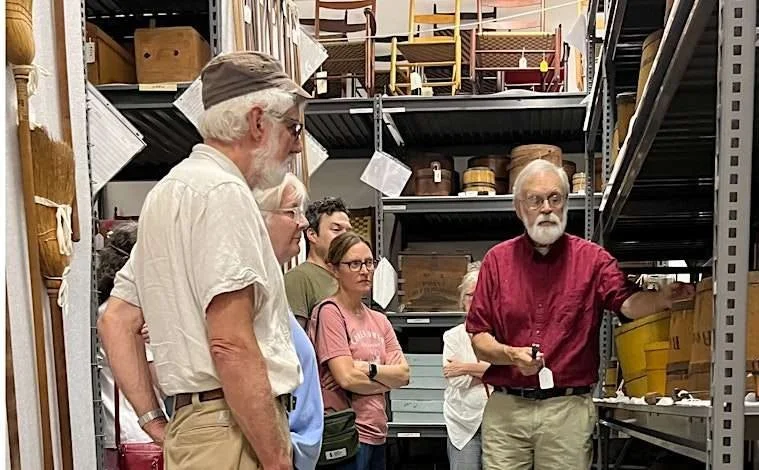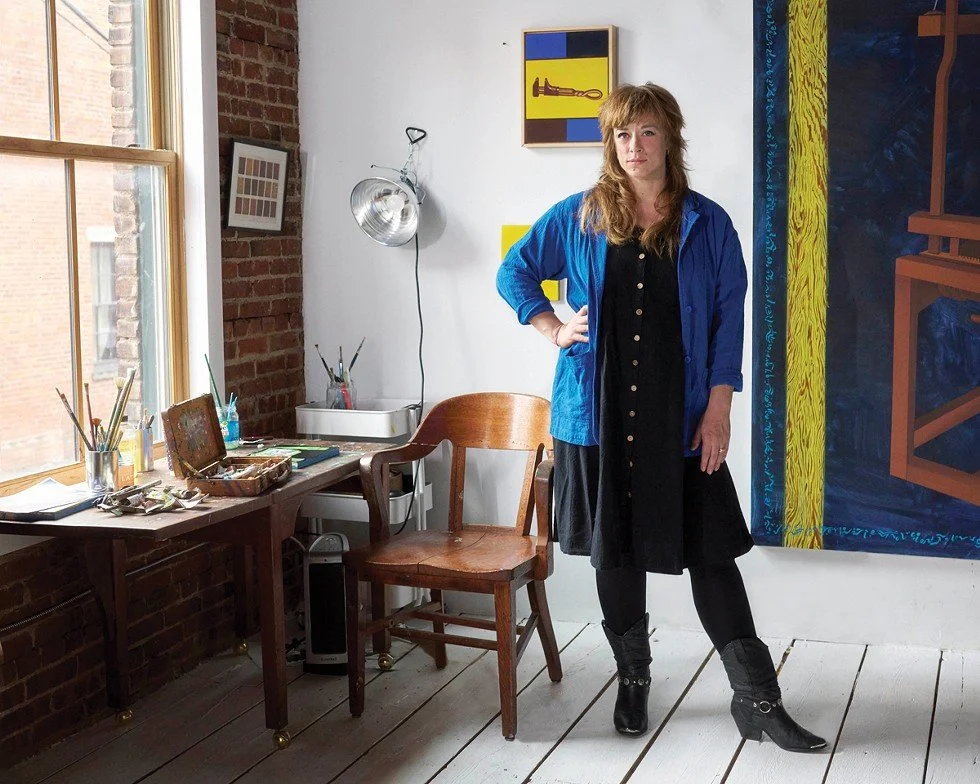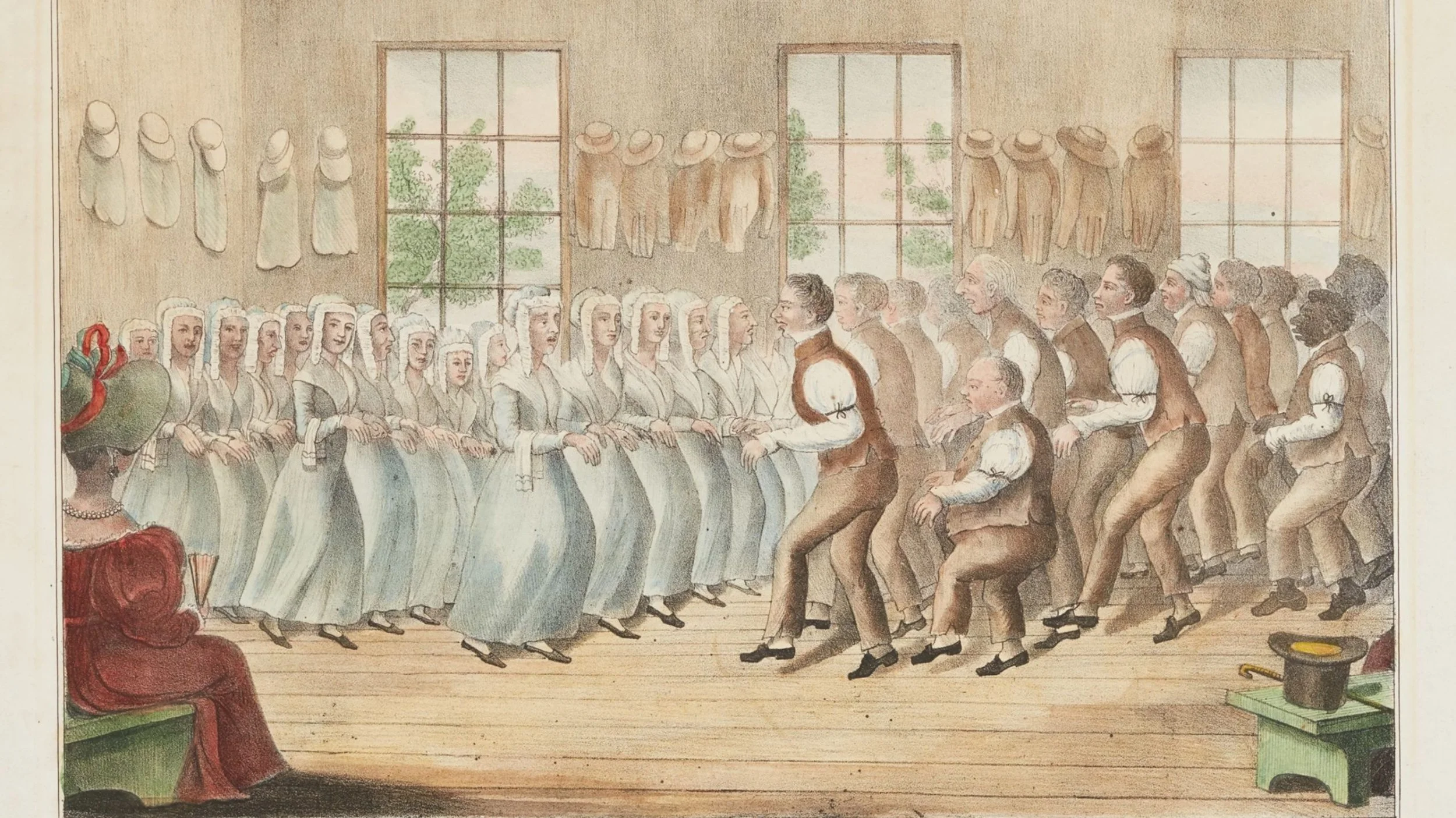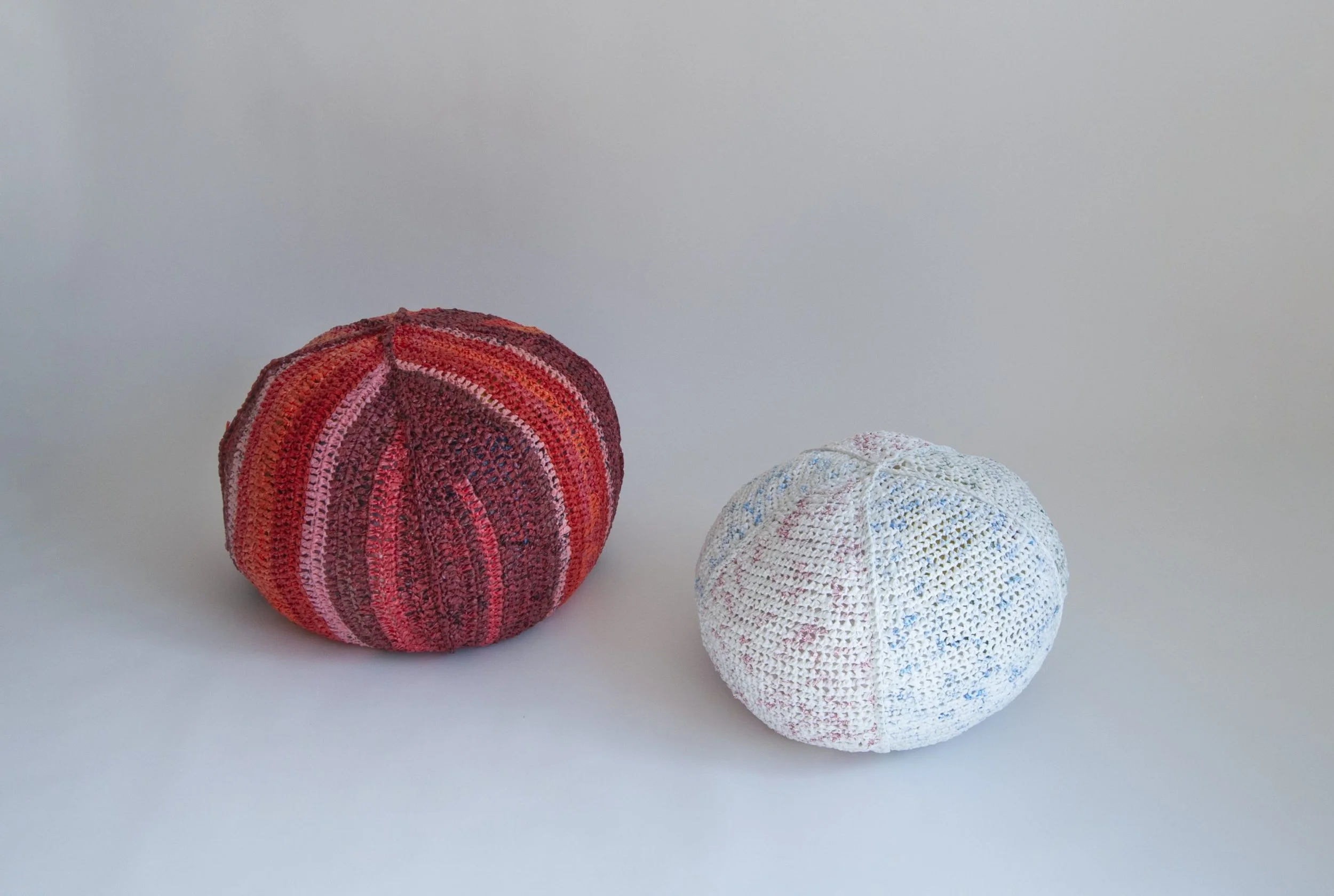In the News
*
In the News *
Of the Kinderhook show focus, which was inspired in part by research of the Shaker Museum archives, McDormand said she loved “the idea that they built something that could hold an infirm or elderly person, who was bedridden, and that it was a communal act of giving to rock them and comfort them.”
“As a piece of furniture, the cradle has to involve other people,” said Bocanegra. “One person is in it, but it has to be activated by another person, otherwise it doesn’t work.”
On a Thursday afternoon in late summer Frances McDormand, the actor, and Suzanne Bocanegra, a conceptual artist, were testing out a Shaker cradle for adults. The exhibit of these little-known furniture items that they put together for Shaker Museum’s pop-up gallery was days from opening in the Kinderhook Knitting Mill — a converted historic space in Columbia County, N.Y.
Actress Frances McDormand has teamed up with conceptual artist Suzanne Bocanegra for “Cradled,” a thought-provoking exhibition in collaboration with the Shaker Museum that illuminates the core Shaker values of compassionate care at the Kinderhook Knitting Mill. Shakers built adult-size cradles to provide nurturing care and respect at the end of life. This exhibition showcases the craft of both adult and child-sized Shaker cradles through the curation of objects, soundscapes, lighting, ephemera, and experience.
Part artist lecture, part memoir, part cultural essay, Farmhouse/Whorehouse was created by Suzanne Bocanegra and stars Lili Taylor. The performance considers the lives of Bocanegra’s grandparents on their small farm in La Grange, Texas, which was located across the road from the Chicken Ranch, the inspiration for the Broadway musical and film, The Best Little Whorehouse in Texas. Using text, song, film, and projections, Bocanegra and Taylor tell a rambling story that examines the idyllic place the rural world occupies in our urban imagination, with occasional detours to explore the pastoral in art, homesteading, French painting in the 19th century, Star Trek, and various utopian communities throughout history, including the Shakers.
Shaker Museum’s first pop-up exhibition of 2024 is entitled “Palm to Poplar: Devotional Labor.” It is an exhibition of original paintings by Caitlin MacBride currently on view in a gallery at Kinderhook Knitting Mill in Kinderhook, New York through April 28. “Palm to Poplar” showcases MacBride’s paintings of Shaker objects alongside pieces from Shaker Museum’s archive that have inspired her.
I met artist MacBride and Shaker Museum Director of Collections and Research Jerry Grant in the gallery in Kinderhook.
Even as far as American religious sects are concerned, the United Society of Believers in Christ’s Second Appearing, better known as the Shakers, are an intriguing lot. The movement was founded by a woman, Ann Lee, who immigrated to New York City two years shy of American independence. Back in her motherland of Manchester, England, she was a factory worker and later a cook; but in the New World, she would become regarded as a female incarnate of the divine by her fellow Believers (talk about a promotion).
Shaker Museum will open a new library, archive, and administrative facility at 29 Jones Avenue in Chatham, Columbia County, NY, thanks to a donation from longtime Shaker Museum supporter Jack Shear.
Shear’s gift includes the property as well as the cost to renovate the building, representing a $1.6 million investment in the future of the museum. The new facility is slated to open June 2024 and will round out the Shaker Museum campus in Chatham, which also includes the forthcoming museum designed by Selldorf Architects at 5 Austerlitz Street.
Hudson-based artist Caitlin MacBride explores the intermingling of creed, labor, and desire through her painterly examination of classic Shaker material culture. A pop-up show at the Kinderhook Knitting Mill presented by the Shaker Museum showcases her richly painted canvases of stoic objects such as looms, knives, and furniture.
Hudson-based artist Caitlin MacBride explores the intermingling of creed, labor, and desire through her painterly examination of classic Shaker material culture. A pop-up show at the Kinderhook Knitting Mill presented by the Shaker Museum showcases her richly painted canvases of stoic objects such as looms, knives, and furniture.
Lacy Schutz, executive director of the Shaker Museum in Chatham, New York, has spent much of her working life preserving hidden pieces of history and making them accessible to the general public. Schutz had what she terms “a little bit of an unusual path” into the museum world: having completed masters degrees in poetry and information science, she trained as an archivist, going on to found the archive programme at the Clark Art Institute in Massachusetts — her first museum role.
Tune in during the 4 p.m. hour for the debut of the new recurring segment “Shaker Show” with Sarah Van Buren, Dana Rasso, and Jerry Grant of Shaker Museum, interviewed by Tom Roe live from the WGXC Hudson studio. The inaugural “Shaker Show” will guide listeners through the history of The Shakers: who they are, where they come from, and where they are now. This hour will cover how they are connected with the legacy of agrarian and communal living here in the Hudson Valley, and also how are they connected to larger social movements of the last two centuries. Shakers were early advocates of gender and racial equality, living in closed, co-ed, monastic communities. They were radically inclusive in these communities, called Families, where every person had a role to play and a niche to fill. Listen in as “Shaker Show” explores this and more!
When you make a product by hand, it automatically has a story. The fact that you have chosen to invest your time, energy, and skill to produce something means there has to be a deeper purpose to the object. This is clearly evidenced in “The Alchemy of Re.Use” – a new exhibition at the Kinderhook Knitting Mill in New York, curated by hettler.tüllmann and the Shaker Museum – where every item has been created with care and meaning.
The Shaker Museum as covered by the media.




